G’day mates, Shyni here! You know, I’ve been slaving away in Australian kitchens for more years than I care to admit – 15 to be exact. And let me tell you, I’ve made every mistake in the book when it comes to kitchen gear. I still cringe thinking about my first flat in Brisbane. I was so proud of myself for finding this “bargain” utensil set at a discount store. Fast forward three months, and I had wooden spoons splitting like crazy, a plastic spatula that melted into a sad puddle when I left it too close to the stove, and a metal whisk that started rusting after just a few washes. Total disaster! That experience lit a fire under me, and I’ve been on a mission ever since to find kitchen utensils that actually last in Aussie conditions. So pull up a chair, and I’ll share everything I’ve learned the hard way about finding the best kitchen utensils in Australia.
Why Quality Kitchen Utensils Matter for Australian Homes
Let me tell you about my sister Emma’s Christmas disaster last year. She was hosting the whole family – 12 people crammed into her modest dining room. Everything was going smoothly until she went to turn the sausages on the barbecue and her cheap dollar-store tongs literally snapped in half! There she was, scrambling around with two forks trying not to burn herself while everyone watched. It was both hilarious and terrifying at the same time. This is exactly why I’m so passionate about quality kitchen utensils – they’re not just about making cooking easier, they’re about keeping you safe and making the whole experience more enjoyable.
Australian kitchens are tough environments, folks. Our climate plays havoc with materials. Up in Queensland, the humidity can make wooden utensils warp like nobody’s business. Down in Adelaide, that dry heat turns plastic brittle as glass. And don’t even get me started on our cooking habits! We go from slow-cooked Sunday roasts to lightning-fast stir-fries on the barbie. Your utensils need to handle this wild variety without giving up the ghost.
I’ve tested more utensils than I can count – seriously, my kitchen looks like a testing laboratory sometimes. The difference between good and bad utensils is night and day. Quality ones feel balanced in your hand, glide across your non-stick pans without scratching, and can handle serious heat without melting or warping. And here’s the kicker – they actually save you money in the long run. When I finally bit the bullet and invested in proper quality utensils, I stopped replacing them every few months. Do the math – it’s cheaper to buy one $30 spatula that lasts five years than five $6 spatulas that fall apart in months.
Essential Kitchen Utensils Every Australian Home Needs
After all these years of cooking and testing, I’ve narrowed it down to the absolute essentials. These are the workhorses that’ll handle 90% of what you do in the kitchen. Let’s walk through them one by one, shall we?
Spatulas and Turners: Your Cooking Companions
Oh boy, don’t get me started on spatulas! I’ve gone through more cheap spatulas than hot dinners. I’ve had them melt when I got distracted chatting on the phone and left them too close to the stove. I’ve had them snap when I tried to flip a hefty steak. And my personal favorite – the head flying off mid-flip, sending food everywhere. A good spatula, my friends, is worth its weight in gold.
For Aussie cooking, I’m all about silicone spatulas. They can handle heat up to about 230°C, which covers pretty much everything you’ll do on a stovetop. They’re flexible enough to scrape every last bit of food from bowls and pots – perfect for when you’re making sauces or batters and don’t want to waste a drop. I’m particularly fond of the ones with wooden handles. They stay cool to the touch and just feel nice in your hand, you know?
When you’re picking out a spatula, look for one made from food-grade silicone without any fillers. Here’s a little trick I learned: bend the spatula. If it turns white, it’s probably got fillers and won’t last as long. And make sure it’s all one piece or securely attached. I’ve had too many heart-stopping moments when the head decided to detach at the worst possible time!
Whisks: For Perfect Mixing Every Time
My mate Lisa is a baking fanatic, and she swears by her balloon whisk for making light, fluffy cakes. I used to think any whisk would do the job, but after borrowing hers one day, I was blown away by the difference. The wires need to be sturdy enough to handle thick batters without bending like wet spaghetti, but flexible enough to incorporate air properly.
For Aussie kitchens, stainless steel whisks are the way to go. They don’t rust (super important in our humid coastal areas) and you can chuck them in the dishwasher without worry. Look for whisks with sealed handles where the wires meet – this stops water getting inside and causing rust. I also like whisks with a loop at the end for hanging. Saves precious drawer space, which is always at a premium in Aussie kitchens.
Size matters too, folks. A medium-sized whisk (about 25-30cm) is versatile enough for most jobs, but having a small one for sauces and dressings is pretty handy. I’ve got both in my kitchen and I reach for them constantly.
Tongs: The Ultimate Multi-Tasker
If I could only have one utensil in my kitchen, it would be a good pair of tongs. No joke! I use them for everything from turning meat on the barbie to tossing salads to reaching things on high shelves (don’t tell my husband, but I’m not the tallest person!). A decent pair of tongs is absolutely essential for Australian cooking, especially with our love affair with barbecues.
When you’re choosing tongs, look for ones with a locking mechanism. This makes them easy to store and stops them from accidentally springing open and poking you in the eye (yes, that’s happened to me!). Silicone tips are great because they won’t scratch your non-stick pans, but make sure the silicone is heat-resistant. I learned this the hard way when cheap silicone tips melted into a gooey mess when I left them too close to the barbie!
Length is important too. For stovetop cooking, 20-25cm tongs are perfect, but for barbie action, you’ll want longer ones (30cm or more) to keep your hands away from the heat. I’ve got both types in my kitchen and I use them all the time.
Specialty Utensils That Elevate Your Cooking
While the basics are essential, there are some specialty utensils that can really take your cooking to the next level. These aren’t must-haves for everyone, but if you enjoy cooking, they’re worth considering.
Coffee Stencils: For Cafe-Quality Drinks at Home
I’ll be honest with you – I was pretty skeptical about coffee stencils at first. I thought they were just for fancy cafes trying to be pretentious. But then my daughter bought me a set for my birthday, and I was completely hooked. There’s something incredibly satisfying about creating beautiful designs on your morning coffee, and it really impresses guests when you have them over.
The 16 Coffee Machine Barista Stencils we offer are absolutely brilliant. They come with 16 different designs, from simple hearts to intricate patterns, so you can create something for every occasion. What I love about them is that they’re made from food-grade plastic that’s dead easy to clean – just rinse under warm water and they’re ready to use again.
Using them is surprisingly simple. Just hold the stencil over your coffee and sprinkle cocoa powder or cinnamon over it. When you lift the stencil, you’re left with a perfect design. It takes a bit of practice to get it right, but once you do, you’ll feel like a professional barista!
Stove Gap Covers: The Problem Solver You Didn’t Know You Needed
Until I discovered stove gap covers, I was constantly losing things down the side of my stove. Spoons, crumbs, even once my earring fell down there and I had to move the entire stove to get it out. These simple covers are such a clever solution to a problem I didn’t even realize I could fix!
The Silicone Kitchen Stove Counter Gap Cover is one of my favorite kitchen gadgets. It’s made from flexible silicone that fits perfectly in the gap between your stove and countertop. It’s heat-resistant, so you don’t have to worry about it melting, and it’s easy to clean – just wipe it down or pop it in the dishwasher.
What I really love about these gap covers is that they stop food from falling down the sides of your stove, which can attract pests and create nasty smells. They also give your kitchen a more finished look, which is great if you’re particular about how your kitchen appears (like I am!).
Straw Brush Cleaners: For Thorough Cleaning
With reusable straws becoming more popular, having a good brush cleaner is essential. I tried cleaning my straws with regular dish brushes, but I could never get them completely clean. Then I discovered specialized straw brushes, and what a difference they make!
The Nylon Straw Brush Cleaner set includes 10 different brushes in various sizes, so you can clean everything from thin cocktail straws to wide smoothie straws. The bristles are sturdy enough to remove stubborn residue but gentle enough not to scratch the straws.
What I particularly like about these brushes is that they have long handles, which makes it easy to clean the entire length of the straw. They’re also great for cleaning other small items like bottle nipples or even the spouts of water bottles. They’ve become one of the most-used tools in my kitchen.
Silicone Food Wraps: The Eco-Friendly Alternative
I’ve been trying to reduce my use of plastic wrap for years, but I struggled to find a good alternative until I discovered silicone food wraps. These reusable covers are amazing for keeping food fresh without creating waste.
The Silicone Food Wrap set includes four different sizes, so you can cover everything from small bowls to large dishes. They’re made from food-grade silicone that’s pliable enough to create a tight seal over containers, but sturdy enough to be reused hundreds of times.
Using them is simple – just warm the wrap in your hands to make it flexible, then stretch it over the container. The natural cling of the silicone keeps it in place. They’re dishwasher safe, so cleaning is easy, and they’re much better for the environment than single-use plastic wrap. I’ve been using mine for over a year, and they still work perfectly.
Artistic Coffee Stencils: For Creative Coffee Lovers
While the first set of coffee stencils I mentioned is great for everyday use, sometimes you want something a bit more artistic. That’s where the Coffee Stencils Template set comes in. These stencils feature more intricate designs, including flowers, patterns, and seasonal shapes.
What sets these apart is the variety of designs – there are 16 different patterns, so you can create something new every day. They’re perfect for when you have guests over or when you want to make your morning coffee feel special. They’re made from durable plastic that’s easy to clean, and they come in a compact case for storage.
I particularly love using these during holidays – the Christmas tree stencil is a favorite in my house during December. They’re also great for teaching kids about coffee art in a safe, easy way. My niece loves helping me make designs on her hot chocolate when she visits.
How to Choose the Best Kitchen Utensils for Your Home
With so many options available, choosing the right kitchen utensils can feel overwhelming. But after years of testing and experience, I’ve developed a simple approach that works for any Australian kitchen.
Consider Your Cooking Style
The first thing to think about is how you actually cook. If you’re someone who makes elaborate meals with lots of ingredients, you’ll need different utensils than someone who mostly makes simple, quick dishes. For example, if you bake a lot, you’ll want good quality whisks and spatulas. If you love stir-fries, you’ll need sturdy tongs and turners.
I recommend making a list of the meals you cook most often and the utensils you use for them. This will help you identify what you really need versus what might just end up collecting dust in a drawer. When I did this exercise, I realized I was using the same five utensils for 90% of my cooking, so I focused on getting high-quality versions of those rather than buying a huge set with things I’d never use.
Material Matters
The material of your utensils affects everything from how they perform to how long they last. Here’s what I’ve learned about the most common materials:
- Wooden utensils: Great for non-stick pans because they won’t scratch the surface. They also feel warm and natural in your hand. However, they can absorb flavors and odors, and they need to be hand-washed and occasionally oiled to prevent cracking.
- Silicone utensils: Heat-resistant and flexible, making them perfect for scraping bowls and stirring delicate foods. They’re also dishwasher safe and won’t scratch your pans. Look for 100% food-grade silicone without fillers for the best durability.
- Stainless steel utensils: Durable and easy to clean, stainless steel is great for tasks that require strength, like whisking or mashing. However, they can scratch non-stick surfaces, so be careful which pans you use them with.
- Nylon utensils: Heat-resistant and gentle on cookware, nylon is a good middle ground between silicone and stainless steel. However, they can melt if exposed to very high heat, so they’re not ideal for barbecue or high-temperature stovetop cooking.
Ergonomics and Comfort
If you cook regularly, you know how important it is to have utensils that feel comfortable in your hand. I’ve developed tendonitis in my wrist from using poorly designed utensils that put strain on my joints, and it’s not something I’d wish on anyone.
When choosing utensils, pay attention to the handle design. It should feel balanced in your hand, not too heavy or too light. The grip should be comfortable, whether it’s made from wood, silicone, or stainless steel. I recommend testing utensils in person if possible, or reading reviews from other Australian cooks to see what they think about the comfort.
Quality Over Quantity
One of the biggest mistakes I see people make is buying huge sets of cheap utensils. You end up with dozens of tools, but most of them are poor quality and you only use a handful of them. It’s much better to invest in a smaller number of high-quality utensils that will last for years.
When I renovated my kitchen, I got rid of all my cheap utensils and started over with just the essentials, but I made sure each one was the best I could afford. Five years later, I still have every single one, and they work as well as the day I bought them. I probably spent more upfront, but I’ve saved money in the long run by not having to replace them constantly.
Caring for Your Kitchen Utensils
Even the best kitchen utensils won’t last if you don’t take care of them properly. Over the years, I’ve learned some simple care tips that can significantly extend the life of your utensils.
Cleaning and Maintenance
Always check the manufacturer’s instructions before cleaning your utensils. While many are dishwasher safe, some (especially wooden ones) need to be hand-washed. For wooden utensils, I recommend washing them quickly after use and drying them thoroughly – don’t let them soak in water or they can warp and crack.
For stainless steel utensils, make sure to dry them completely before storing to prevent rust, especially if you live in a humid area like coastal Queensland. A little mineral oil rubbed into wooden utensils every few months will keep them from drying out and splitting.
Proper Storage
How you store your utensils can make a big difference in how long they last. I used to just throw all my utensils in a drawer, but they would bang against each other and get damaged. Now I use a utensil holder on my countertop for the ones I use most frequently, and the rest go in a drawer with dividers to keep them separated.
Hanging utensils is another great option, especially for those with limited drawer space. It also keeps them easily accessible while you’re cooking. Just make sure to hang them away from the stove where they could be exposed to heat and grease.
Regular Inspection
Every few months, I go through all my utensils and check for signs of wear and tear. Look for cracks in wooden handles, loose parts, or any signs of rust or corrosion. Catching these problems early can prevent them from getting worse and potentially contaminating your food.
If you find a utensil that’s damaged beyond repair, don’t hesitate to replace it. Using damaged utensils isn’t just ineffective – it can also be dangerous. I once had a spatula with a loose head that flew off while I was cooking hot oil, and it could have caused a serious burn.
Building Your Perfect Kitchen Utensil Collection
After years of cooking in Australian kitchens and testing countless utensils, I can tell you that investing in quality kitchen tools is one of the best decisions you can make for your home. Good utensils make cooking easier, safer, and more enjoyable, and they save you money in the long run by lasting for years instead of months.
Remember, it’s not about having the biggest collection or the most expensive tools – it’s about having the right tools for how you cook. Start with the essentials, choose quality materials, and take good care of them, and you’ll build a collection that will serve you well for years to come.
Ready to upgrade your kitchen utensils? Explore our complete range of kitchen cooking utensils at My Deals Online Australia. We’ve carefully selected each product for quality, durability, and value, so you can shop with confidence knowing you’re getting the best kitchen tools for your Australian home. From essential spatulas and whisks to specialty items like coffee stencils and silicone wraps, we have everything you need to create the kitchen of your dreams.
Sources
- Food Standards Australia New Zealand – Guidelines for food contact materials: foodstandards.gov.au
- Choice Australia – Kitchen utensil reviews and comparisons: choice.com.au
- Australian Competition & Consumer Commission – Product safety for kitchen utensils: accc.gov.au
- National Health and Medical Research Council – Food safety guidelines: nhmrc.gov.au
- CSIRO – Material science research for kitchen products: csiro.au
- Australian Institute of Food Safety – Safe food handling practices: foodsafety.com.au
- Sustainability Victoria – Reducing kitchen waste with reusable products: sustainability.vic.gov.au
- NSW Food Authority – Safe materials for food contact: foodauthority.nsw.gov.au


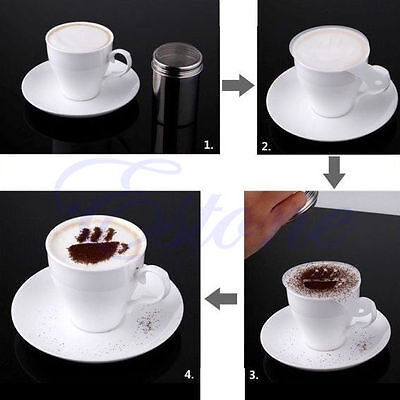


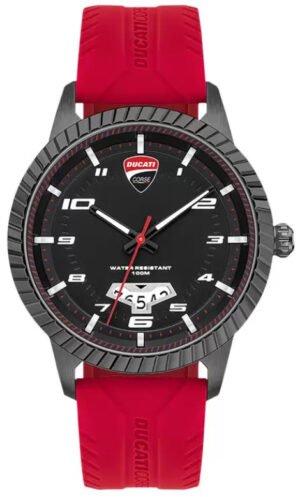



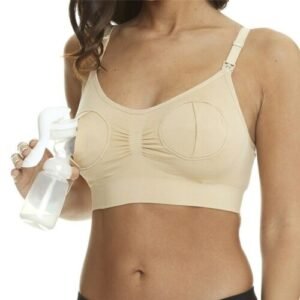



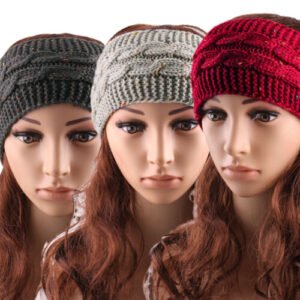
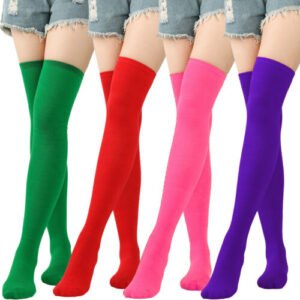
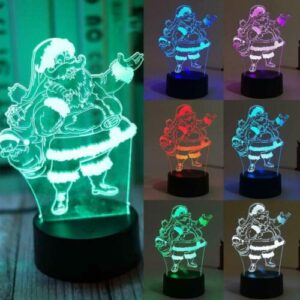


This just made my whole day brighter, thank you for sharing